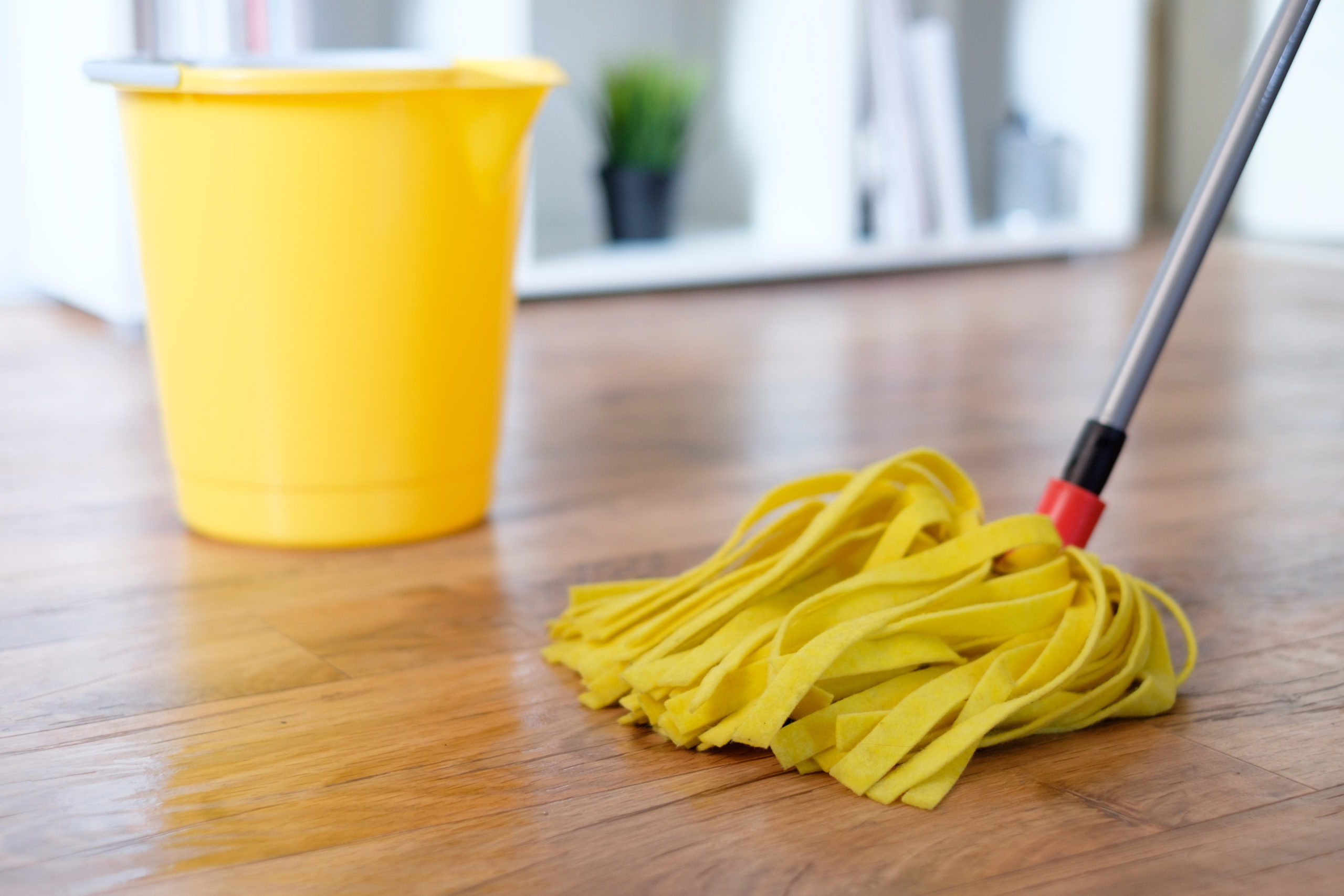Unless you’ve been living under a rock, you’ve likely heard of reclaimed wood by now. Over the past few years, it has emerged as the hottest trend in flooring. You’ve probably even seen it used even if you weren’t aware of what to call it. Here’s the basics.
The Trend Towards Farmhouse-Style Hardwood Floors
Interior design elements go through trends that tend to be somewhat cyclical, much like fashion. Currently, the fashion of the 1990s is making a resurgence; that fashion was a response to a lot of what was happening in the 1960s. The trend moves in cycles like that. Interior design, and specifically hardwood flooring, moves in similar trends. Currently, the hardwood designs of the 1940s are growing in popularity again. Those trends were a response to the economic hard times of the 1930s. So, what are those trends?
Does The Hardness of Your Wood Floor Matter?
Wood hardness is measured on the janka scale. The janka scale ranges from about 100 to 4000, with higher numbers indicating wood that is harder. The lowest wood on the scale is generally balsa wood, which is used for many craft projects. It ranks at 100 and would not make a good floor. On the opposite end of the spectrum, a wood that ranks near 4000 would not make a great floor because it would require so much work to saw and to nail. It would be a hassle to sand it and finish it. Typically, a good hardwood floor is about 1000 or higher. For comparison, different strands of oak range from 1260 to 1360. They’re also the most popular kinds of hardwood flooring for several reasons.
What is the Hardest Hardwood Floor You Can Buy?
There are reasons to look for the hardest hardwood floor you can buy. The main reason you would look for a very hard hardwood is longevity. If you have any furniture made of pine, you’ve likely noticed that you can dent it with your finger. That’s why it doesn’t make a great flooring material if you want your floor to look great for years. Hard domestic woods are about on the middle of the hardness scale. They can’t be dented with a fingernail but they can sometimes be scratched by pet nails or high heels. That means you’ll need to make sure you keep your polyurethane finish in good condition. Alternately, you can choose a very hard hardwood. It will resist scratching, chipping, or denting.
Best Ways to Clean Your Hardwood Floors
With your new hardwood floor installation, you want to make sure you are doing your very best to keep it in the best shape possible. As people have become more concerned with how they can maintain their home’s cleanliness, more people have wondered just what the best practices are when it comes to their hardwood. Getting your hardwood installed was a big decision, and you want to make sure you are protecting it as much as you can. Below, you’ll find an easy three step process to follow when it is time to clean your Colorado hardwood. We were able to use some infor from this article here for proper hardwood floor maintenance.
- The first step is to remove the largest particles (dust, pet hair, leaves brought in from outside, etc.) with a hardwood floor vacuum or by sweeping. In this step, it is important to only use a hardwood floor vacuum or a regular vacuum with the deactivated brush roll so that your flooring does not get scratched. Additionally, these types of vacuums tend to also have rubber wheels to prevent scratching as well.
In those high traffic areas of your home (think the kitchen, entryway, and hallway) it’s best to do this step once a day. While this might not be feasible all the time, the more frequently it’s able to occur, the better your hardwood will look in the long run – just remember the investment you made into your floor!
- The next step is to mop your Denver hardwood. It is up to you what type of cleaning solution you choose to use, just make sure that it is safe on hardwood floor installations! In fact, if you wanted to create a solution yourself, a simple mix of dish soap and water will suffice. Never shake this mixture but mix gently.
Rather than using a soaking wet mop to throw onto large sections of the floor, do small sections at a time with a damp mop. Not only will this dry quicker and allow you to use the room again sooner but will also protect the hardwood from getting soaked. When completing many things on your chore checklist in one day, clean the floors last so that they have time to dry before you need to walk on them again. Using too much water at once is quite possibly one of the worst things you can do for your flooring, as it can get in between the cracks in the wood and make it swell and warp underneath. Additionally, refrain from using any waxes or types of furniture sprays on your hardwood rather than a hardwood-recommended product. These will most likely void the warranty on your floors and will make them extremely slippery. To get your floors to dry faster, consider turning a fan on in the room.
- The last step is to take care of scratches or dullness. While a solution you provide for your floors often won’t be quite as good as a professional could do, it can be a good idea to do if your floors are still relatively new and there isn’t much damage to take care of. The longer it has been since your hardwood floor installation, the more scratches (and life!) happen. Knowing how to deal with them and minimize them is key. For some instances, using a liquid hardwood scratch concealer is a good, quick fix – simply follow the directions of the product you decide to use and let it dry!
Once your floor starts to look a little dull after a few years of heavy foot traffic, it is possible to restore a bit of that shine with a floor polish. Additionally, you can also use a floor wax to do the same thing while also cleaning them. If your floor is really starting to look worn, you might also consider refinishing it. This option we typically recommend leaving up to the experts as the flooring would need to be sanded and then have a new finish applied (sanding can create a lot of dust that most homeowners are not prepared for). If you’re not sure how to fix scratches or dullness – or simply don’t have the time – we encourage you to use a Colorado hardwood professional for the best results.
While these may seem like some very in-depth steps to follow, they become routine once you’ve followed them a few times! With the proper maintenance of your hardwood floors, you will be well on your way to enjoying them for many long years to come. Incorporating this cleaning regimen into your daily, weekly, and monthly chore list is a great way to keep your hardwood a priority in your home – and you should be able to tell a difference almost immediately. Another great way to cut down on the amount of dirt accumulating on your floors is by having some high-quality mats at all of your entrances. Taking off your shoes before you come inside is another way to reduce the dust and outside dirt from being tracked in, especially during stormy or snowy days when you are more likely to have wet shoes.
For those with animals, keeping your pets groomed with their nails cut is another preventative measure to maintain your floors. Taking the time to wipe your pet’s paws off before coming in from the outside will ensure dirt and mud aren’t tracked in. And lastly, keeping a mat underneath their water bowls will stop water from standing on the hardwood. Through only a few preventative steps, your hardwood is set up for a long healthy life! Because the actual installation of the hardwood has just as much impact as the maintenance of it, using a trusted hardwood installation company is crucial in the long run. If you are in need of new hardwood or simply have questions on the best way to take care of your new installation, feel free to give us a call! Being able to protect your floors is our favorite part about our business.

Should You Steam Mop Your Hardwood Floor?
Steam mops have been growing in popularity as a way to clean all kinds of floors recently. In fact, some steam mop manufacturers have said that their steam mops are safe for use on hardwood floors. However, some hardwood floor manufacturers have disputed that categorization. They say that steam mops are not safe for hardwood floor. So, what’s the truth?

Which Hardwood Flooring Is the Most Pet-Friendly?
Just about every homeowner loves hardwood flooring. There is one group that often finds they don’t care for it: pets. There are two main concerns with pets and hardwood flooring. First, the pet’s claws have a tendency to scratch the hardwood flooring. Secondly, pets sometimes have a hard time if the hardwood is slippery. The slippery, hard floor can be painful on the joints of old animals. There are some things you can do to alleviate those concerns. If you’re committed to hardwood flooring, here are the things you should look for.
What Is Reclaimed Wood?
Reclaimed wood or reclaimed lumber is wood that was once part of buildings that have since been torn down. The wood is reclaimed to be used for things like wood flooring. Reclaimed wood is different than salvaged wood which is wood that has been cut down and stored but was not previously used for construction.
Should I Replace my Hardwood Floors or Refinish them?
Hardwood flooring is a beautiful option but it is prone to a lot of abuse and over time will start to show signs of the constant use. The floor may get dented, scratched, have stains, chip or even warp. If your flooring is looking lackluster and missing the shine it once had you may be wondering if its time to replace it or if you can refinish it.
Read More Should I Replace my Hardwood Floors or Refinish them?
Purple Hardwood Floors Are a Hot New Trend
On design blogs, hardwood floors tend to all look pretty similar. There are some truly stunning hardwood floors, but they tend to range from light brown to dark brown. Most of them are made from domestic hardwoods that look great when stained. However, every once in awhile, you might come across a floor that truly stands out. One of the most striking colors you’ll likely see is purple. Purple hardwood floors are still fairly rare, but they’re growing in popularity. There are two ways to achieve a purple floor; you can choose purple wood, or you can stain it. Staining hardwood it is fairly straightforward. It’s just a matter of choosing the color of purple you would like. Purple woods are available for hardwood flooring, though.
